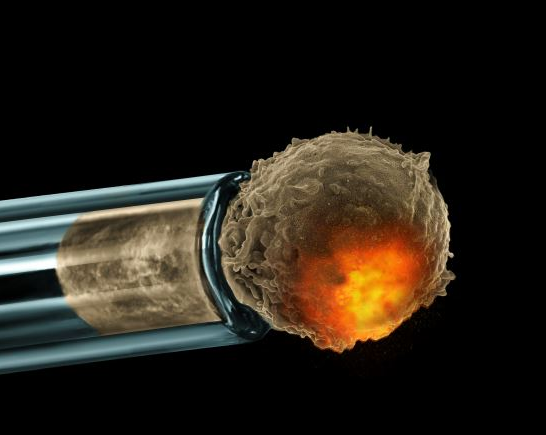Single-cell leukocyte mechanics: force generation, viscoelasticity, and rupture mechanics
Julien Husson (LadHyX, École polytechnique, France)
Leukocytes are very soft cells that perform many diverse functions: they adhere, crawl, transmigrate, kill, phagocytose or interact with other cells. During their activation, leukocytes both generate mechanical forces and change their viscoelastic properties (i.e. they stiffen/soften, get more or less viscous). We have developed micropipette-based setups to quantify single-leukocyte mechanical properties and monitor them over time while a leukocytes gets activated by a relevant stimulus. We further quantify rupture properties of cell membrane, as these help us to better understand cell structure and dynamics.
We use this approach in diverse contexts involving leukocytes: activation of T lymphocytes, phagocytosis of a target by a neutrophil, or transmigration of a lymphoblast across an endothelial monolayer. We perform microrheology experiments with a profile microindentation setup [1,2], measure forces generated by T lymphocytes [3,4], characterize cell-substrate adhesion [5] or establish a rupture criteria for membrane rupture [2,6] (Figure 1). These mechanical measurements shed a new light on how cell mechanical properties evolve over a short period of time (seconds), how they adapt to the stiffness of their environment, and how intracellular signaling is involved.

T-lymphocytes in the human body routinely undergo large deformations, both passively when going through narrow capillaries and actively when transmigrating across endothelial cells or squeezing through tissue. In this artistic rendering, a T-lymphocyte is aspirated in a micropipette to mimic passive deformations that occur when squeezing through narrow capillaries. The fluorescent signal is due to the entry of propidium iodide into the cell and indicates membrane rupture (Image: Julien Husson, LadHyX, Ecole polytechnique, cellmechanics.jimdo.com/galleries)
1. Guillou, L., Babataheri, A., Puech, P.-H., Barakat, A.I. & Husson, J. Dynamic monitoring of cell mechanical properties using profile microindentation. Scientific Reports 6:21529 (2016).
2. Guillou, L., Babataheri, A., Saitakis, M., Bohineust, A., Dogniaux, S., Hivroz, C., Barakat, A.I. & Husson, J. T lymphocyte passive deformation is controlled by unfolding of membrane surface reservoirs. Molecular Biology of the Cell 27(22): 3574-3582. (2016, journal cover).
3. Husson, J., Chemin, K., Bohineust, A., Hivroz, C. & Henry, N. Force Generation upon T Cell Receptor Engagement. PLoS One 6(5):e19680 (2011).
4. Basu, R.*, Whitlock, B.M.*, Husson, J.*, Le Floc’h, A., Jin, W., Dotiwala, F., Giannone, G., Hivroz, C., Lieberman, J., Kam, L.C. & Huse, M. Cytotoxic T Cells Use Mechanical Force to Potentiate Target Cell Killing. Cell 165(1):100–110 (2016).
5. Hogan, B., Babataheri, A., Hwang, Y., Barakat, A.I. & Husson, J. Characterizing Cell Adhesion by Using Micropipette Aspiration. Biophysical Journal 109(2):209-19 (2015).
6. Gonzalez-Rodriguez, D., L. Guillou, F. Cornat, J. Lafaurie-Janvore, A. Babataheri, E. de Langre, A.I. Barakat, and J. Husson. Mechanical Criterion for the Rupture of a Cell Membrane under Compression. Biophys. J. 111: 2711–2721 (2016).
